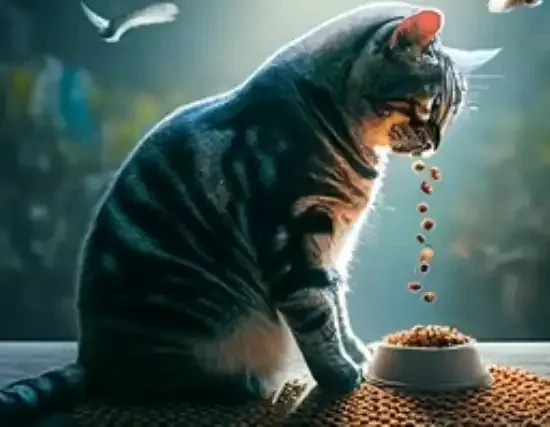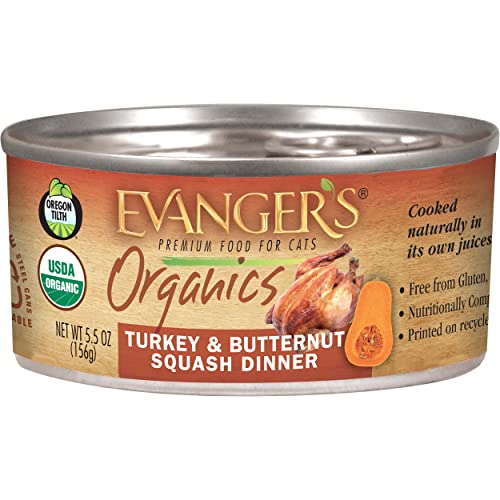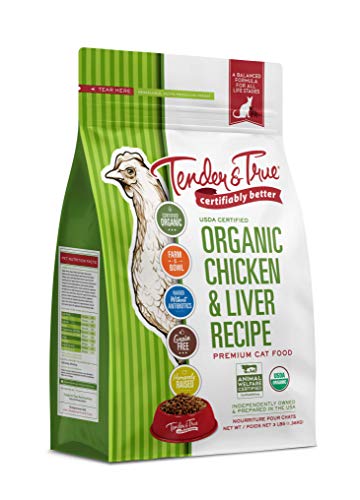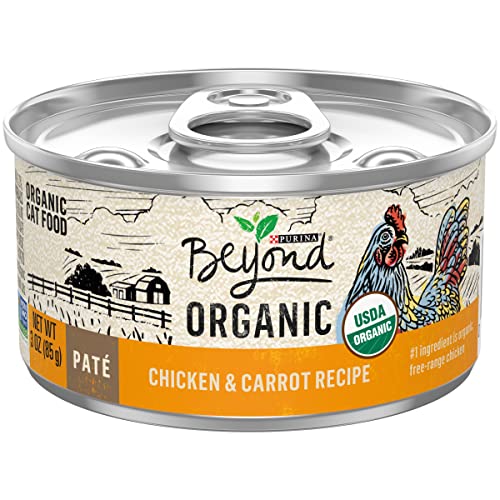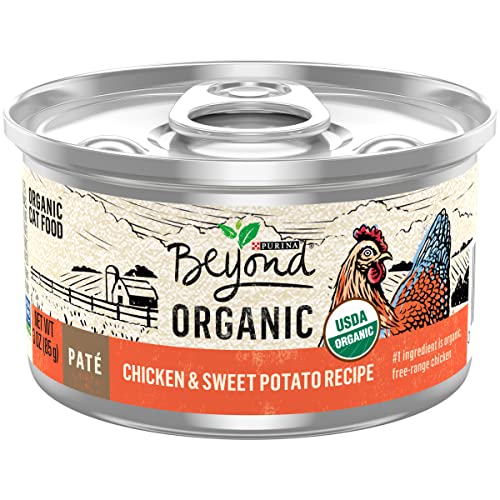Are you standing in the pet food aisle, overwhelmed by a sea of cat food bags, each promising optimal health and happiness for your feline companion? Perhaps you've started to scrutinize ingredient lists, feeling a growing unease about the long list of unpronounceable additives and mysterious "by-products." Or maybe you’ve simply noticed your cat’s coat is lackluster, their energy levels are flagging, or their digestion seems… sensitive. If any of this resonates with you, you are likely part of a growing movement of cat owners who are seeking a more natural approach to feline nutrition. The concept of “natural” cat food has surged in popularity, driven by a desire to provide our beloved pets with diets that more closely mirror what nature intended, moving away from highly processed, additive-laden options. But what does "natural" really mean in the context of cat food, and more importantly, is it truly the best choice for your cat's health and wellbeing?
This article will delve into the world of natural cat foods, cutting through the marketing hype to explore what truly constitutes a natural diet for our feline companions. We will unravel the complexities of pet food labels, decoding the term "natural" and differentiating it from other related terms like "organic" and "grain-free." We will investigate the compelling benefits of feeding your cat a natural diet, from improved digestion and a radiant coat to enhanced energy and potentially even a longer, healthier life. We will also equip you with the knowledge to navigate ingredient lists with confidence, identifying the key components of a truly natural and biologically appropriate cat food while steering clear of less desirable fillers and artificial additives. Finally, we will guide you through the different types of natural cat foods available, from dry kibble to raw diets, offering practical advice on how to choose the best option for your individual cat's needs, preferences, and your own lifestyle, empowering you to make informed decisions that will nourish your cat from the inside out and contribute to a vibrant and thriving life for your cherished feline friend.
The term "natural" in the pet food world is frequently bandied about, often adorning packaging as a powerful marketing tool. However, it's crucial to understand that the term's regulatory definition can be somewhat loose, and its application in marketing can sometimes stretch beyond its true meaning. While the Association of American Feed Control Officials (AAFCO), the organization that sets nutritional standards for pet food in the United States, does have a definition for "natural," it's important to recognize its nuances. AAFCO defines "natural" as a feed ingredient or feed that is derived solely from plant, animal or mined sources, either in its unprocessed state or having been subject to physical, mechanical, heat extraction, rendered, purification, extraction, hydrolysis, enzymolysis or fermentation, but not having been produced by or subject to a chemically synthetic process and not containing any additives or processing aids that are chemically synthetic except in amounts that might occur unavoidably in good manufacturing practices. In simpler terms, this means "natural" pet food should primarily contain ingredients that are naturally derived and minimally processed. However, the crucial point is that this definition leaves room for interpretation and doesn't automatically equate "natural" with "superior quality" or "healthier." Many pet food brands utilize the term "natural" liberally in their marketing, even if their products still contain a significant portion of processed ingredients or may lack some of the hallmarks of truly wholesome nutrition. Therefore, while the "natural" label can be a helpful starting point, it’s absolutely essential to delve deeper and scrutinize the ingredient list itself to determine if a cat food truly aligns with a natural and biologically appropriate approach to feline nutrition. Do not rely solely on the "natural" claim emblazoned on the front of the bag; become a savvy label reader to truly discern the quality and composition of your cat's food.
So, what are the key characteristics that distinguish truly natural cat foods from those that simply utilize the "natural" label as a marketing tactic? Genuine natural cat foods prioritize whole, recognizable ingredients. This means you should see ingredient lists dominated by named meat sources like chicken, turkey, salmon, or beef, clearly identifying the primary protein sources. Whole grains, if the food is grain-inclusive, should be specified as brown rice, oats, or quinoa, rather than generic "grains" or refined options like corn or wheat. Similarly, fruits and vegetables should be listed as recognizable whole forms, like carrots, spinach, or blueberries. The processing methods used in truly natural cat foods are also generally minimal, aimed at retaining nutritional value rather than maximizing shelf life or palatability through heavy processing. Gentle cooking methods, freeze-drying, and dehydration are common approaches that help preserve the integrity of nutrients. A defining characteristic of natural cat foods is the absence of artificial additives. This means you should be looking for foods that explicitly avoid artificial colors, designed solely to make the food more visually appealing to humans but offering no benefit to your cat. Artificial flavors are also red flags, often used to mask less palatable ingredients or enhance taste artificially. Perhaps most importantly, natural cat foods should be free of artificial preservatives like BHA, BHT, and ethoxyquin, which are synthetic chemicals used to extend shelf life but have raised concerns about potential long-term health effects. Instead, natural cat foods utilize natural preservatives like Vitamin E (tocopherols) and Vitamin C (ascorbic acid). Finally, given cats are obligate carnivores, a hallmark of truly natural cat food is the prioritization of animal protein. The ingredient list should clearly reflect that animal protein sources are the foundation of the diet, listed prominently and in substantial quantities, reflecting a cat's biological need for meat-based nutrition.
It's also important to differentiate "natural" from other related terms you might encounter
Choosing to feed your cat a natural diet can unlock a cascade of benefits that contribute to their overall health and vitality. One of the most frequently observed improvements in cats transitioned to a natural diet is enhanced digestion and nutrient absorption. Natural cat foods, with their focus on whole, recognizable ingredients and minimal processing, are often easier for cats to digest. They typically contain fewer of the fillers, artificial additives, and low-quality ingredients that can burden the digestive system and lead to sensitivities. The higher quality protein sources in natural foods are also generally more digestible and bioavailable, meaning cats can more efficiently extract and utilize the essential amino acids they need. Furthermore, the inclusion of natural fiber sources, often from vegetables and fruits in appropriate quantities, can promote healthy gut bacteria and improve digestive regularity. This improved digestibility and nutrient absorption can translate to fewer digestive issues, such as sensitive stomachs, diarrhea, or vomiting, leading to a happier and more comfortable digestive experience for your feline friend.
A radiant and healthy skin and coat are often a visible testament to the benefits of a natural diet. Natural cat foods are typically rich in omega-3 and omega-6 fatty acids, derived from quality animal protein sources and healthy fats like fish oil or chicken fat. These essential fatty acids are crucial for maintaining skin hydration, reducing inflammation, and promoting a shiny, lustrous coat. By avoiding artificial additives and focusing on wholesome ingredients, natural diets can also minimize skin sensitivities and allergies that can manifest as dryness, itching, and coat problems. The result is often a noticeably healthier, softer, and more vibrant coat, reflecting the improved nutritional foundation from within.
Many cat owners report a significant boost in their cat's energy levels and overall vitality after switching to a natural diet. A diet rich in high-quality animal protein and essential nutrients provides cats with the fuel they need to thrive. This contrasts with diets that are high in fillers and low-quality ingredients, which can lead to sluggishness, lethargy, and a general lack of zest for life. Natural cat foods, with their focus on biologically appropriate ingredients, provide sustained energy and support optimal metabolic function, resulting in a more active, playful, and engaged feline companion.
Weight management and maintaining lean muscle mass are also key benefits associated with natural cat foods. These diets typically contain appropriate protein and fat ratios, crucial for building and maintaining muscle mass while avoiding excess weight gain. They often utilize controlled amounts of carbohydrates, prioritizing quality sources if grains are included, and avoiding excessive fillers that can contribute to weight gain without providing meaningful nutrition. Natural cat foods help cats maintain a healthy weight by providing nutrient-dense calories from quality sources, supporting a lean and muscular physique rather than promoting the accumulation of excess fat.
For cats prone to allergies and sensitivities, natural diets can offer significant relief. Food allergies and sensitivities in cats are often triggered by artificial additives, common fillers like corn and soy, or low-quality protein sources. By eliminating these potential allergens and focusing on limited, high-quality ingredients, natural cat foods can reduce the likelihood of allergic reactions. For cats with known allergies or sensitivities, switching to a limited-ingredient natural diet with novel protein sources (proteins they haven't been exposed to before) can be particularly beneficial in managing their symptoms and improving their overall comfort. While not a guaranteed cure for all allergies, a natural diet can be a powerful tool in minimizing dietary triggers and supporting a cat with sensitivities.
Finally, and perhaps most profoundly, feeding your cat a natural diet may contribute to improved long-term health and longevity. While long-term studies are ongoing, the logic behind feeding a biologically appropriate diet is compelling. By providing cats with the nutrients they are designed to thrive on, in a form that is easily digestible and free from potentially harmful additives, natural diets may help reduce the risk of certain chronic diseases over time. This could include obesity-related issues, digestive disorders, and potentially some types of allergies and sensitivities that can be exacerbated by less optimal diets. While no diet can guarantee perfect health, providing your cat with a natural and biologically appropriate nutritional foundation is a proactive step towards supporting their long-term well-being and maximizing their chances of a long, healthy, and happy life by your side.
When navigating the world of natural cat foods, understanding key ingredients to prioritize and those to avoid is crucial. High-quality animal protein should be the cornerstone of any natural cat food. Look for ingredient lists where named meat sources are listed as the primary ingredients. Chicken, turkey, salmon, and beef are all excellent choices, provided they are clearly identified (e.g., "chicken," "deboned turkey," "salmon meal"). Meat meal is a concentrated protein source, and its quality can vary. Opt for named meat meals like "chicken meal" or "turkey meal," rather than generic "meat meal" or "poultry meal," as named meals provide more transparency about the protein source. It is best to avoid "meat by-products" and "unnamed meat meals" altogether. These ingredients are often of lower quality, less digestible, and lack clarity regarding their origin, potentially including less desirable animal parts.
Healthy fats are equally essential in a natural cat diet. Look for named animal fat sources such as chicken fat, salmon oil, and fish oil. Chicken fat is a good source of linoleic acid, an omega-6 fatty acid, while salmon oil and fish oil are rich in beneficial omega-3 fatty acids. Omega-3 and omega-6 fatty acids are vital for skin and coat health, brain function, and reducing inflammation. While some plant-based oils can contribute to overall fat content, avoid cat foods that rely heavily on plant-based oils as primary fat sources. Cats are biologically adapted to utilize animal fats more efficiently, and animal fats are richer in the specific fatty acids they require.
Carbohydrates should be limited and carefully chosen in a natural cat diet. If opting for a grain-inclusive natural cat food, prioritize whole grains like brown rice, oats, and quinoa over refined grains. Whole grains offer more fiber and nutrients compared to processed grains like corn and wheat. Grain-free options are available and can be appropriate for some cats, particularly those with grain sensitivities. However, grain-free does not automatically mean superior nutrition. It's essential to evaluate the overall ingredient list and ensure the food is still balanced and contains high-quality protein and fats. Small amounts of vegetables and fruits can be beneficial in natural cat foods, providing vitamins, minerals, and fiber. However, they should be present in limited quantities and not constitute primary ingredients, as cats are not biologically designed to thrive on plant-heavy diets. It's crucial to avoid excessive fillers and low-quality carbohydrates. Fillers like corn, wheat gluten, soy, and cellulose provide minimal nutritional value for cats, can be difficult to digest, and can contribute to digestive issues and weight gain.
Essential vitamins and minerals are, of course, vital for feline health. Natural cat foods often utilize naturally derived sources of vitamins and minerals from whole food ingredients whenever possible. However, it's important to ensure that the cat food, regardless of the vitamin source, is labeled as "complete and balanced" according to AAFCO standards. This guarantees it meets the minimum nutritional requirements for your cat's life stage. Finally, strictly avoid artificial additives in natural cat foods. This includes artificial colors, artificial flavors, and artificial preservatives like BHA, BHT, ethoxyquin, and artificial dyes. These additives offer no nutritional value and can potentially trigger sensitivities or pose long-term health concerns. Look for natural preservatives like Vitamin E (tocopherols) and Vitamin C (ascorbic acid) to ensure freshness without compromising your cat's health.
The landscape of natural cat foods offers a diverse range of options, each with its own advantages and considerations. Natural dry cat food, or kibble, remains a popular choice due to its convenience and affordability. When selecting a natural dry food, the key is to apply the ingredient evaluation principles discussed earlier: scrutinize the ingredient list, prioritize high-quality animal protein sources, and avoid artificial additives and fillers. While dry food offers convenience, it's important to acknowledge its generally lower moisture content compared to wet food. To mitigate this, always ensure your cat has access to plenty of fresh, clean water, especially if dry food is their primary diet.
Natural wet cat food, available in cans or pouches, often boasts a higher moisture content, which is inherently beneficial for feline hydration, and can often be higher in protein compared to dry kibble. Again, when choosing a natural wet food, ingredient list scrutiny is paramount. Look for named meat sources as primary ingredients and avoid artificial additives and excessive fillers. Wet food can be particularly beneficial for cats who are picky eaters, as its aroma and texture are often more appealing, and for cats with urinary tract issues, where increased hydration is crucial.
Freeze-dried and dehydrated natural cat foods represent minimally processed options that aim to retain a greater proportion of the natural nutrients found in whole food ingredients. These foods typically undergo gentle processing methods that remove moisture while preserving nutritional integrity. They are often reconstituted with water before serving, offering a balance of convenience and a more natural, less processed form of nutrition. Some freeze-dried options may even be raw or raw-inspired, offering a closer approximation to a biologically appropriate raw diet in a more convenient format.
Raw cat food diets, whether home-prepared or commercially prepared, represent the most biologically aligned approach to feline nutrition. Raw diets consist of unprocessed meat, bones, organs, and potentially small amounts of vegetables and fruits, mimicking the natural diet of wild cats. Potential benefits of raw food diets include high moisture content, nutrient density, and biologically appropriate ingredient ratios. However, it is absolutely crucial to emphasize the importance of proper formulation and food safety when considering raw diets. Home-prepared raw diets, if not formulated correctly by a veterinary nutritionist, can lead to serious nutritional imbalances. Commercially prepared raw diets from reputable brands are generally formulated to be nutritionally complete and balanced but may be more expensive. Food safety is also a paramount concern with raw diets, as they can pose a risk of bacterial contamination if not handled and stored properly, particularly posing risks for immunocompromised cats or owners. If you are considering a raw diet, thorough research, consultation with a veterinarian or veterinary nutritionist, and meticulous food safety practices are absolutely essential.
Transitioning your cat to a natural food requires patience and a gradual approach to minimize digestive upset. A gradual transition over 7-10 days, or even longer for sensitive cats, is key. Abruptly switching diets can overwhelm a cat's digestive system and lead to diarrhea, vomiting, or loss of appetite. Start by mixing a small amount of the new natural cat food with your cat's old food, gradually increasing the proportion of new food and decreasing the old food over the transition period. A common guideline is to start with a 75% old food and 25% new food mix for the first 1-2 days, then move to a 50/50 mix for the next 2-3 days, then 25% old and 75% new for another 2-3 days, before finally transitioning to 100% new food. However, adjust this timeline based on your cat's individual digestive response. Monitor your cat's digestion closely throughout the transition. Pay attention to their stool consistency and appetite. Watch for any signs of digestive upset, such as diarrhea, vomiting, or a decrease in appetite. If you notice any of these signs, slow down the transition or consult with your veterinarian.
For picky eaters, transitioning to a new food can be more challenging. Try warming wet food slightly to enhance its aroma and make it more enticing. Mixing a small amount of wet food with dry food can also improve palatability and encourage eating. If necessary, you can use cat-safe toppers or flavor enhancers, such as low-sodium cat broth or a sprinkle of bonito flakes, in moderation to entice your cat to try the new food. However, aim to wean them off toppers over time so they accept the new food on its own. Patience and persistence are key when transitioning picky eaters. Offer the new food consistently, but avoid force-feeding or creating a stressful feeding environment. It may take time and experimentation to find a natural food that your picky cat enjoys.
Choosing the right natural cat food for your cat is a personalized decision based on several factors. Consider your cat's age and life stage. Kittens, adult cats, and senior cats have different nutritional needs. Select a natural cat food that is specifically formulated for your cat's current life stage to ensure they receive the appropriate balance of nutrients. Factor in any health conditions your cat may have. If your cat has allergies, kidney disease, diabetes, or any other health condition, consult with your veterinarian for dietary recommendations. Some natural cat foods may be better suited for specific health concerns, or dietary modifications might be necessary. Take into account your cat's preferences for taste and texture. Cats can be notoriously finicky. Experiment with different protein sources, textures (wet, dry), and flavors within the natural cat food category to find what your cat enjoys and will consistently eat. Your budget and lifestyle are also practical considerations. Natural cat foods can sometimes be more expensive than conventional brands. Determine your budget and find a balance between quality and affordability within the natural food options available. Also, consider your lifestyle. Dry food is more convenient for free-feeding, while wet food requires more timely serving and refrigeration. Choose a food type that aligns with your feeding habits and schedule.
While natural cat foods offer numerous benefits, it's important to acknowledge potential downsides and considerations. Cost is often a factor, as natural cat foods, with their higher quality ingredients and often less processed nature, can be more expensive than conventional brands. Availability may also be a consideration, as some specialized natural cat food brands might be less widely available in all pet stores and may require online ordering. Choosing a truly natural food requires more research and label reading on your part. You need to become an informed consumer and actively scrutinize ingredient lists to differentiate genuine natural options from marketing claims. Finally, if considering homemade raw diets, be aware of the potential for unbalanced nutrition. Poorly formulated homemade raw or cooked diets can lead to serious nutritional deficiencies or excesses. If pursuing a DIY diet, strongly recommend consulting with a veterinary nutritionist to ensure nutritional balance and safety.
In conclusion, embracing natural cat foods can be a transformative step towards enhancing your cat's health and wellbeing. By choosing a truly natural diet, you can unlock benefits ranging from improved digestion and a radiant coat to increased energy and the potential for improved long-term health. Empower yourself to become an informed consumer, learn to decipher pet food labels, and carefully select natural cat foods that align with your cat's individual needs and your own values. The journey of providing your cat with a nourishing and biologically appropriate diet is a rewarding one, offering the promise of a happier, healthier, and more vibrant life for your cherished feline companion, a testament to your love and dedication to their holistic well-being.
